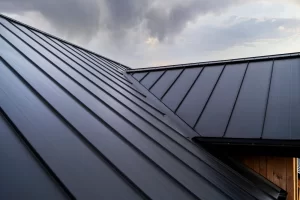 Selecting the right roof covering for your home is a crucial decision that can impact its aesthetics, durability, and energy efficiency.
Selecting the right roof covering for your home is a crucial decision that can impact its aesthetics, durability, and energy efficiency.
With an overwhelming array of options available in the market, it can be challenging to find the perfect fit for your needs.
Today, we’ll walk you through essential considerations and factors to help you make an informed choice.
1. Assess Your Climate and Location
The first step in choosing the ideal roof covering is to understand your local climate and weather patterns. Different materials perform better under specific conditions.
For instance, asphalt shingles are versatile and work well in various climates, while metal roofs excel in areas prone to heavy rainfall or snow.
Take into account factors like temperature variations, precipitation, and wind strength to determine the most suitable material.
2. Consider Your Budget
Your budget will play a significant role in the selection process. Roof covering costs can vary significantly depending on the material, style, and complexity of the installation.
While some materials may have a higher upfront cost, they could offer greater longevity and lower maintenance expenses over time.
Weigh the long-term benefits against your initial investment to find the best value for your money.
3. Evaluate Durability and Longevity
A roof is a long-term investment, and its durability is crucial in ensuring your home’s protection for years to come. Research the lifespan of different roofing materials and opt for one that can withstand harsh weather conditions and resist damage from external elements.
Factors like resistance to impact, fire, and rot should be considered, especially if you live in an area prone to wildfires or severe storms.
4. Explore Energy Efficiency
Energy-efficient roof coverings can help reduce your home’s heating and cooling costs, making them an environmentally-friendly choice.
Look for materials that provide excellent insulation, reflecting sunlight to keep your home cooler in hot climates and retain warmth during colder months. Energy-efficient roofing can not only save you money but also contribute to reducing your carbon footprint.
5. Match Your Home’s Style
The roof covering you choose should complement the overall architecture and style of your home. Consider the color, texture, and design of different materials, keeping in mind the existing exterior elements.
Whether you have a contemporary, traditional, or rustic-style home, there’s a roofing material that can enhance its curb appeal and aesthetic charm.
6. Check Local Regulations and Restrictions
Before making a final decision, research any local regulations, zoning laws, or homeowner association guidelines that may dictate the types of roof coverings allowed in your area.
Some neighborhoods may have restrictions on certain materials or colors to maintain a cohesive look in the community.
Selecting the right roof covering is a vital investment that requires careful consideration of various factors. Take your time to research and consult with roofing professionals to find the perfect roof covering that meets all your requirements.
Picture Credit: Freepik
